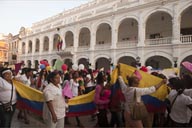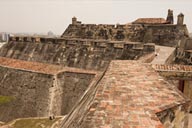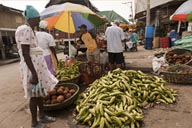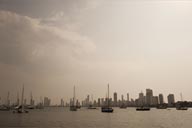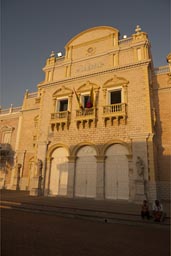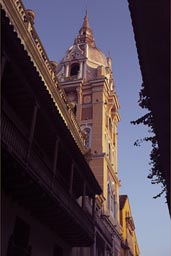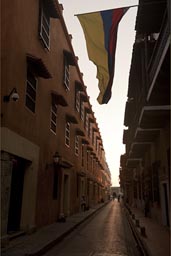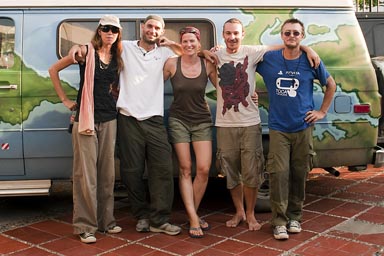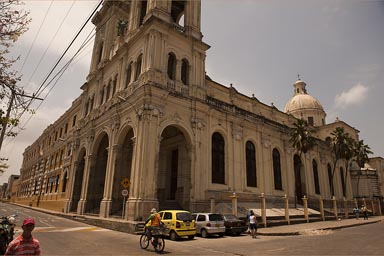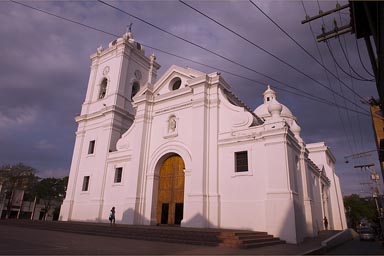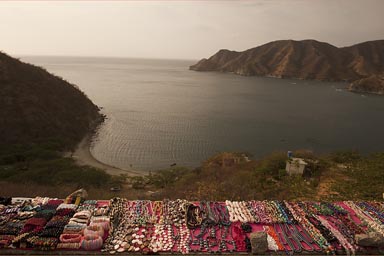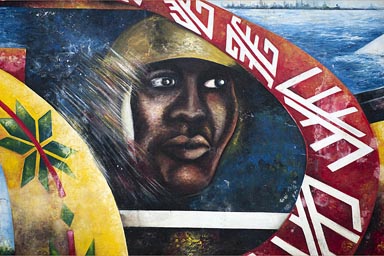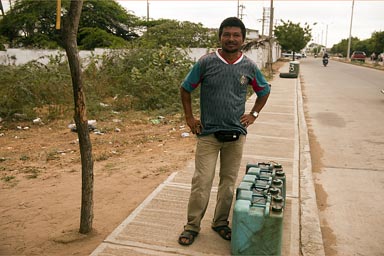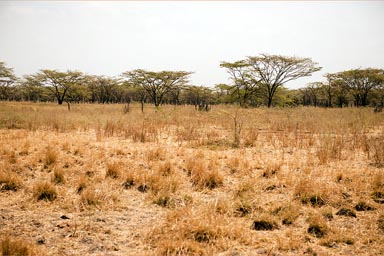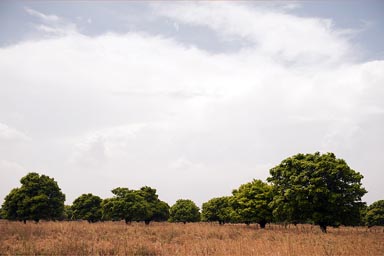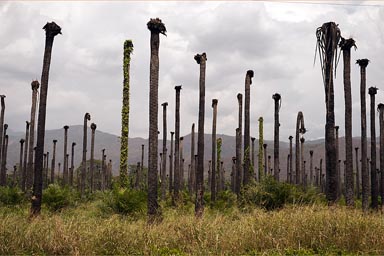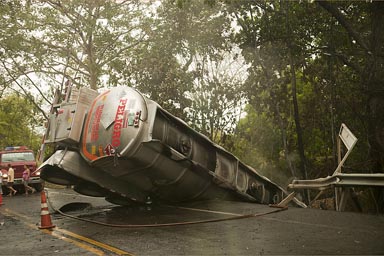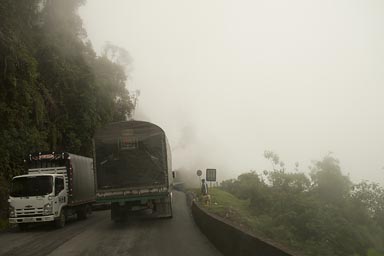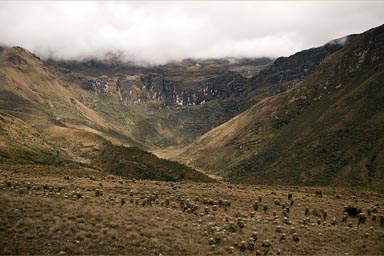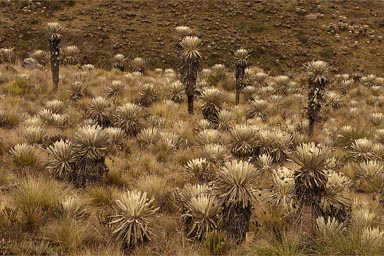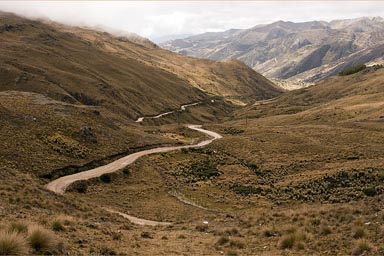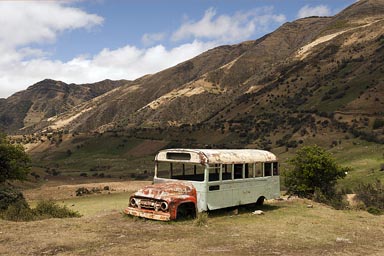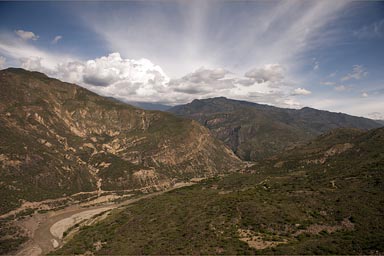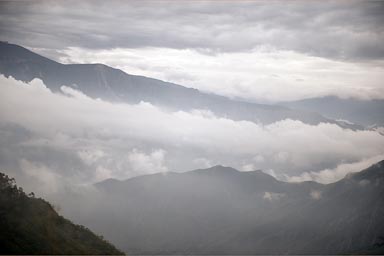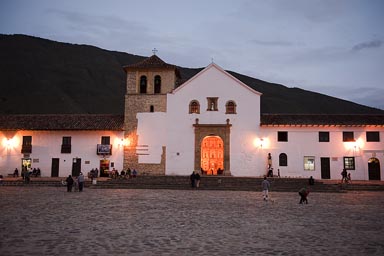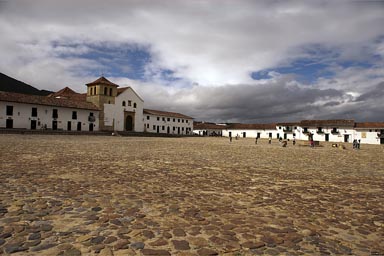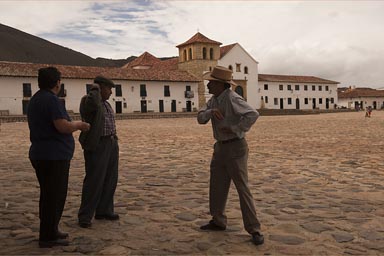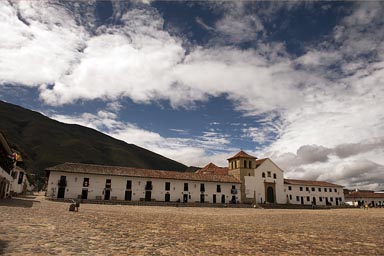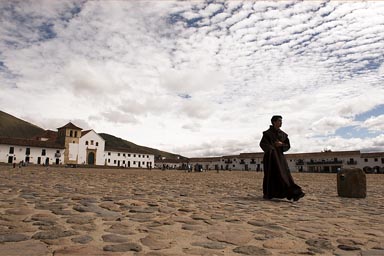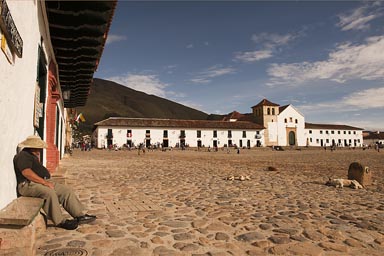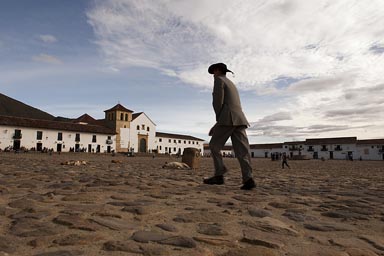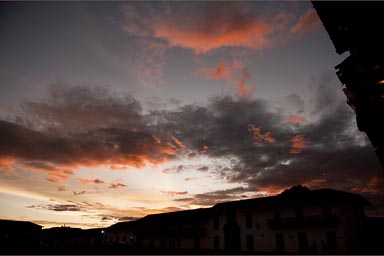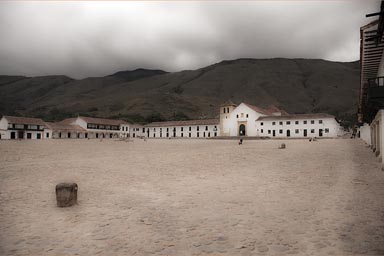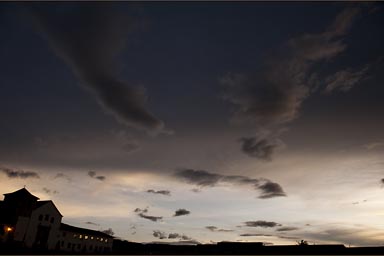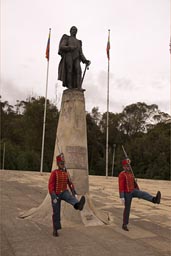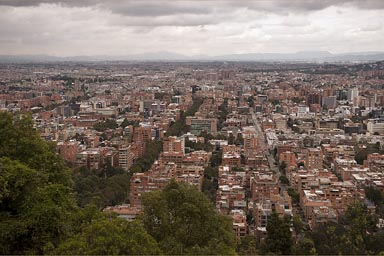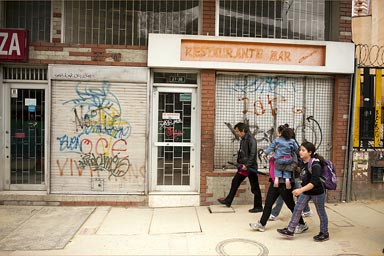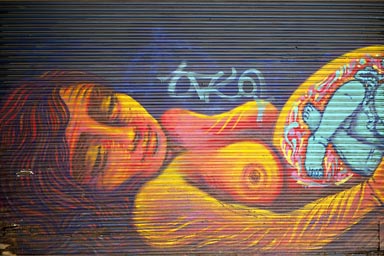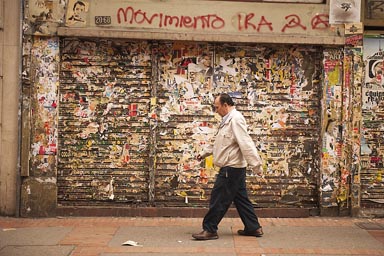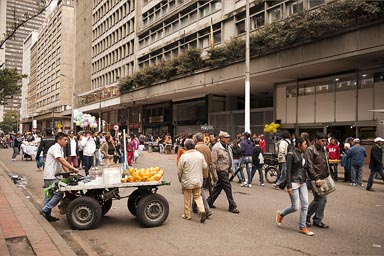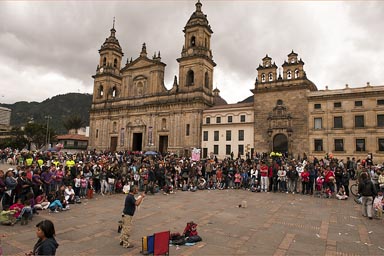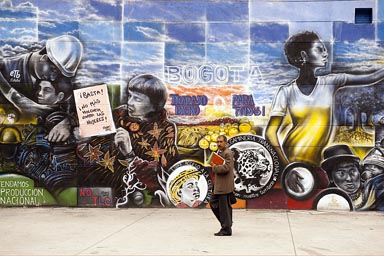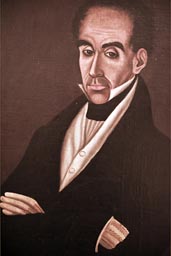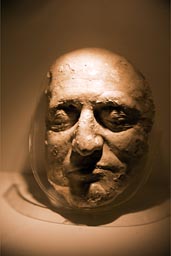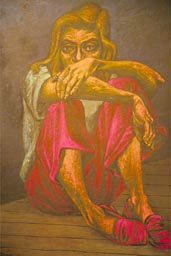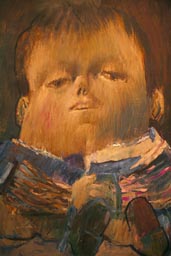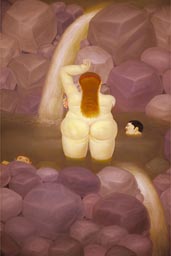www.thisfabtrek.com > journey > south-america > colombia > 20120401-villa-de-leyva
Cartagena, García Márquez country.
Download GPS (KML) track/waypoints.
Finally, South America, finally Colombia, I am in Gabriel García Márquez's country I have read his autobiography and I am reading One Hundred Years of Solitude. The Colombian Caribbean coastline with the Andean hinterland are the settings of so many of Márquez's novels, Latin America's inescapable repetition of history of corruption, class and racism, civil wars, coups and other fatal undertakings that end so often in doom, the narrative. Cartagena is where Márquez deserted from university for a career in journalism and writing.
Christina and I have rushed hard to Cartagena after shipping the van from Panama on a container vessel, only to find the ship to be late by at least a week. Gives us time for Cartagena and maybe to understand a bit Márquez's Caribbean soul.
Cartagena is a pearl, maybe the most beautiful and liveliest colonial city that I have seen around here, Salsa blast out of the Donde Fidel Havana club at 12 noon, its owner Fidel Lotteau is easily recognized in the midst of the early crowd, a grand man with white hair, he is pictured with every musician that ever entered Cartagena, all these photos decorate the brick walls up in his club. The music on the many overhead flat screens is high class, the rhythms sharp, the brass jazzy shrill, some dances shriek, some songs cry the sad old man's song of death of a friend. Old and new, we seem to be in the center of the musical world, and Caribbean Salsa is hottest in Columbia, Cuba and Puerto Rico.
An old dark skinned man in an all white Caribbean suit and white slippers, almost dressed like García Márquez, joins us at the bar and is more than happy to share his musical knowledge and friendship to Fidel L. with us, and why not - let's have a cerveza Aguila on an empty stomach. Our new friend is a writer, lives the Márquez myth, his name Jose Sarabia Canto, and I wonder what heritage the ~arabia in his name might hide.
So after a week we recuperate the van, it takes a whole cruel day in hot white sun, and who understands the complicated workings of a huge port and special zones and why one needs these hundreds of papers, thanks God we hired the right agent to help us out.
We say good-bye to the friends Alex and Julian from the past 2 weeks, and wonder when we would see them again. By the time of writing this, more than 2 months later, Alex has already sold his van in Bolivia and travelled to Hong Kong.
Barranquilla, still García Márquez country.
Saturday 24th of March we leave and drive to Barranquilla, where Márquez in 1950 was part of a literature circle, Barranquilla Group, whose environment gave him much inspiration for his literary career.
Just central Barranquilla seems not so safe to us, poverty and bumming in the streets, our American van may give an easy target. But we are new to Colombia, so maybe we don't understand the Caribbean yet?
Santa Marta, Vallenato with out limits.
We set over the Rio Magdalena delta, on a highway. I remember reading that Márquez undertook this journey by boat with his mother, 1951 or so, and it should become the most eyeopening event in his entire carrier, back to where he was born, Aracataca, alias Macondo. It is this village where he set One Hundred Years of Solitude.
But we continue to Santa Marta, instead of Macondo, which is even marked on my GPS map, despite being a fictional name. Why didn't we go? There is no explanation!
Further on there is a trashy beach and bay, Taganga, hippies and drugs hang. Somewhere in the back of the coast are the snow peaks of the Santa Marta mountains, so near to the coast, 5,700m high, and so invisible behind white haze at this time of the year. It is around or over these mountains that the founding fathers of Macondo had travelled in One Hundred Years of Solitude.
We are back in Santa Marta and the police warns us not to take a camera and indicate where most of the robbings take place. But tonight all is cool, and distorted Vallenato bleats out of speakers, hard core, redneck-ish, without mercy, Vallenato must come distorted, it lacks the sophistication and sweetness of Panamanian accordion music.
Guajira, Riohatcha to Maicao.
That's how we miss Macondo, we take the northern, wrong way around the Sierra Nevada de Santa Marta, as I still dream of getting a glimpse of the snowy summits. We follow the coast for the Guajira, the land of the Wayuu people. Night is in Riohacha and I re-park quit often to find a secure spot. Then on east where gasoline near the Venezuelan border is damn cheap and sold from plastic containers in the streets. We are approaching the northern most point of South America which we would not reach, in Maicao, we headed south again, we just don't have the time, we are once more on a mission.
The Andean, the great separators.
South and south past tanker accidents and lots of truck traffic and road building, in Bucaramanga after first rains we turn left into the high Andean mountains where I have a hard time understanding the Spanish. Over in cosy Pamplona where the rains hit harder and the mist hangs deep and I start thinking about new car repairs, I am loosing again differential oil by the wheel-bearing gaskets (only 1000km earlier in Panama I've had that repaired).
South and south again direction Tunja and I am back checking and topping up diff-oil by myself. We cross some beautiful high Andean passes at 3,900m, and travel fantastically bad roads; it is the geography of Colombia that functioned for centuries as a divisor, and allowed the country to stay segregated in almost autonomous provinces for such a long time, the root for all the troubles they say.
There is one delicious snack Colombians do so well and I cannot get enough from, empanadas, a roll of puffy potato or yuca pastry, stuffed with chicken, meat, rice, an egg occasionally, freshly baked out and cheap with spicy aji, sometimes on yogurt basis, and we get it just about everywhere.
Villa de Leyva.
In Tunja, one more detour to Villa de Leyva which is top, colonial, todo tranquillo; we spend all day sitting on the Plaza Mayor and watch the clouds move over and by. Best spot is near the tienda, left in the corner that sells cheap beer, sun eventually sets to your right and lights up the church and the plaza.
But there is this old lady that speaks so many languages, she is nuts, and there is the other old lady that smokes cigarettes all the time, from a wealthy family and she is nuts too, tells us a guy, sad story; too many drugs when they were young we wonder?
In Villa de Leyva there is one thing, it has many expensive fancy restaurants which we don't go to, and many not so cheap restaurants where food is bad tourist food. Just on the 5th day, a vegetarian restaurant run by some Hare Krishna members beats it all; the waitress, and the way she babbles away, is obviously brain washed, the food is soya meat-imitation, made to taste like meat, in a sandwich with processed melted cheese, a thin slice of tomato, I never have eaten anything more disgusting in my whole life. Why, when India is famous for excellent vegetarian food?
I really wonder, are they all nuts here? I do what I can, stop eating and we leave Villa de Leyva hungry.
Boyacá Bridge.
El Puente de Boyacá is the location where in 1819 Simón Bolívar's republican army won the most important victory in the wars of independence against Spanish forces (wiki). The bridge has been maintained as a symbol of the Independence of all of South America.
Bogotá.
Still hungry since Villa de Leyva we drive on till Bogotá and McDonald's. Bogotá, is a city 30-50kms long from north to south, 8 million people, a rainy climate, altitude is 2,500m, we are 5° north of the equator and it is almost freezing at night.
In downtown Bogotá we miss the usual historic colonial architecture, Bogotá rather reminds of a German city after WW2, and it has an equally horrific history. Massive riots, El Bogotazo, broke out on April 9th, 1948 after the murder of liberal presidential candidate Jorge Eliécer Gaitán, and in only 10 hours some 5000 people found death and central Bogotá was destroyed by fire. Gabriel García Márquez, then still studying law in Bogota was only a few blocks away where it happened. His eyewitness account of the dark hours can be read in his autobiography 'Living to Tell the Tale'.
El Bogotazo just kicked it off, La Violencia (wiki) spread out to the whole country, a conflict between Conservatives and Liberals that would last 20 years and cost 200,000 lives. When other parts today of Bogotá are refreshingly modern, by God downtown, has not recovered!
Colombia's history in general had been marred by violence, first before 1948 for more than a century, by the break-up of Grand Colombia (wiki), the civil wars between Conservatives and Liberals, and the Thousand Days War (wiki) just being one, and the United Fruit Company massacres and cover-ups, and then after 1968 by the civil (guerrilla) wars between FARC (wiki) and rightwing paramilitary groups, and recently by the drug wars.
We wonder will it ever end?
On a good note, Bogotá is interesting, vast, we meet great people, are so well taken care of by Christina's friends. But we have little time as my boys arrive by plane and we leave!
From the Museo Nacional.
www.thisfabtrek.com > journey > south-america > colombia > 20120401-villa-de-leyva

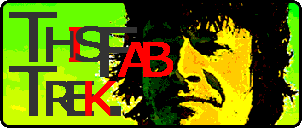
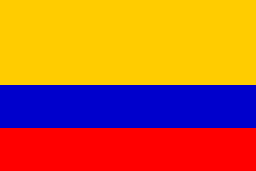
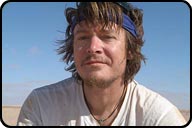
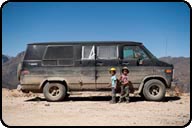


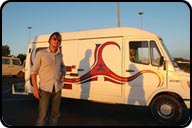
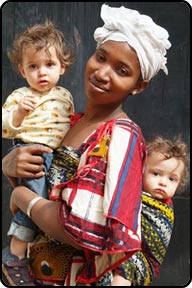
 contains Festival/Fiesta/Art photography.
contains Festival/Fiesta/Art photography.
